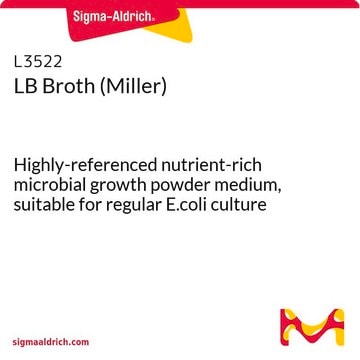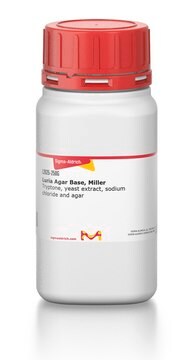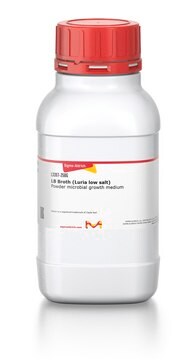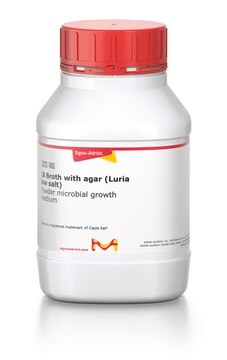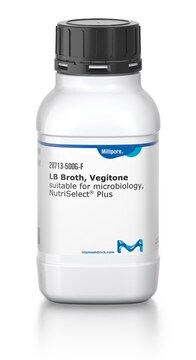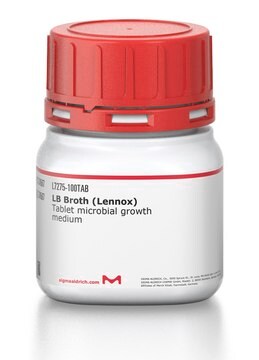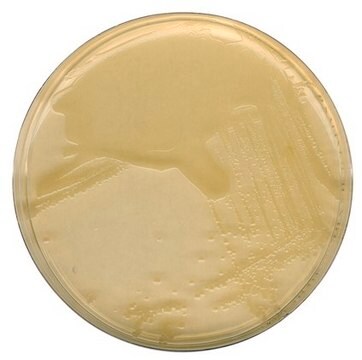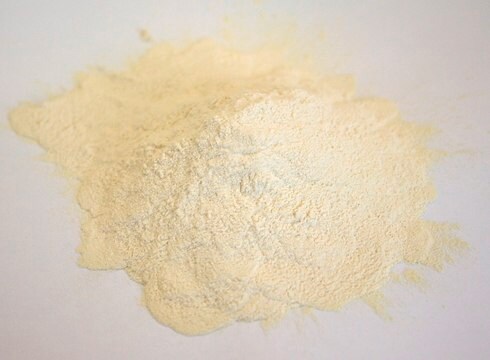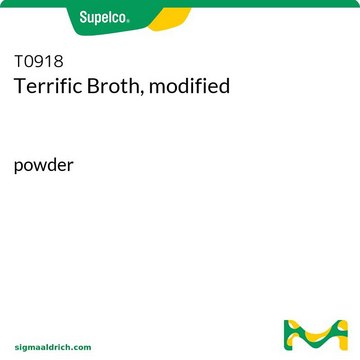Wichtige Dokumente
L1900
Luria broth base, Miller′s modified
Tryptone, yeast extract and sodium chloride
Synonym(e):
Lennox broth base, modified, Luria-Bertani broth base, modified, Lysogeny broth base, modified
About This Item
Empfohlene Produkte
Qualitätsniveau
Form
powder
Methode(n)
microbiological culture: suitable
Anwendung(en)
agriculture
microbiology
Allgemeine Beschreibung
Anwendung
Luria broth base (LB), Miller (L1900) is a bacteria growth mixture of sodium chloride (0.5g/L); tryptone (10g/L) and yeast extract (5g/L) typically combined with agar (15g/L).
Komponenten
Rekonstituierung
Lagerklassenschlüssel
10 - Combustible liquids
WGK
WGK 3
Flammpunkt (°F)
Not applicable
Flammpunkt (°C)
Not applicable
Analysenzertifikate (COA)
Suchen Sie nach Analysenzertifikate (COA), indem Sie die Lot-/Chargennummer des Produkts eingeben. Lot- und Chargennummern sind auf dem Produktetikett hinter den Wörtern ‘Lot’ oder ‘Batch’ (Lot oder Charge) zu finden.
Besitzen Sie dieses Produkt bereits?
In der Dokumentenbibliothek finden Sie die Dokumentation zu den Produkten, die Sie kürzlich erworben haben.
Kunden haben sich ebenfalls angesehen
Unser Team von Wissenschaftlern verfügt über Erfahrung in allen Forschungsbereichen einschließlich Life Science, Materialwissenschaften, chemischer Synthese, Chromatographie, Analytik und vielen mehr..
Setzen Sie sich mit dem technischen Dienst in Verbindung.